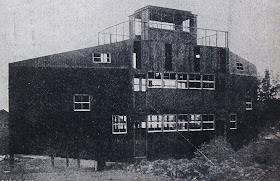 |
| A "ballon captif", used as an observation post during the battle of Fleurus in 1794. |
In the early 1890s the airplane was not yet invented, but there had of course been many - not very succesful - attempts to construct a flying machine. In an article published in 1892 the Swedish writer Karl af Geijerstam cited experts, who were of the opinion that it was time discard the futile attempts to make "clumsy hot air balloons"steerable, and begin the search for other options.
Af Geijerstam mentioned that the "most serious attempts to build a flying machine" were being done in America. These attempts were according to af Geijerstam based on the idea that such a machine would imitate the flight of birds.
Not many years passed until there was a real breakthrough - in the US - but the first airplanes were not quite flying like birds ....
What I found interesting in af Geijerstam's article, were to illustrations of various, more or less unsuccessful "flying machines", some of which never had gone further than the drawing board. Here are some of them:
 |
| The electrically powered hot air balloon "La France", built by Krebs and Renard, actually flew in 1884, but it was not able to function in windy circumstances. |
 |
| A number of earlier projects for steerable hot air balloons. |
 |
| This hot air balloon, constructed by Giffard, was powered by a steam engine. It actually flew in 1852, but was unable to move against stronger winds. |
 |
| A drawing of an "air ship" designed by Gabriel Yon. It was never actually built. |
 |
| An inventor by the name of Nadar had this kind of ideas about future flying machines. |
PS
Although the airplane had already been invented, there was no lack of flying fantasies, as late as 1906. That year a Swedish news magazine published this picture of a "Flying House", which was said to be under construction in north London by some unnamed French inventors ...
 |
| "The Flying House" |



















